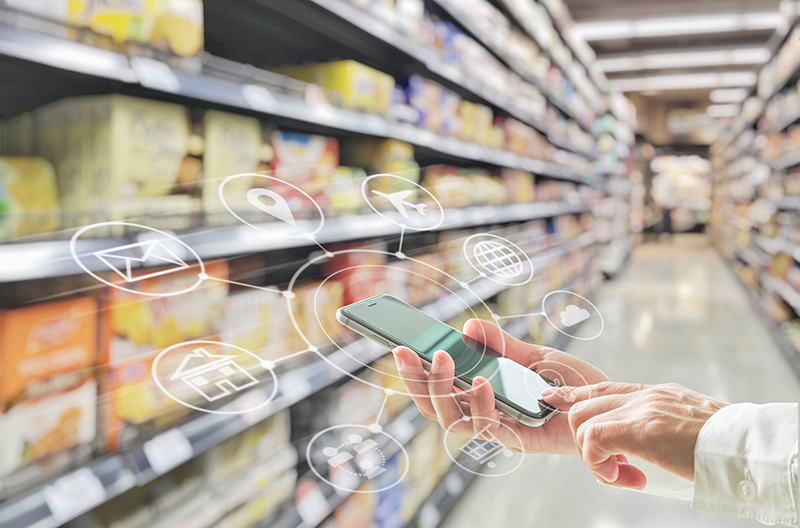Palo Alto, California-based SymphonyAI Retail CPG has released new global shopper research that highlights a rapid decline in online grocery shopping behavior.
The analysis of more than 58 million shopper baskets of purchase data across the U.S. and Europe found that 52 percent of e-commerce grocery shoppers left the online channel over the last year. Further analysis of those lapsed customers reveals that while 60 percent are reverting to the retailer’s brick-and-mortar location, 40 percent have left it altogether.
The loss of former online customers has impacted e-commerce revenue growth, according to the proprietary research.
While total online revenue growth dipped by 1 percent in the first quarter of 2023 compared to Q1 2022, buffered in part by inflation, the study showed a 14 percent net decline in the number of online shoppers (departing customers offset by new ones).
“The overall decline in online customers and their impact on e-commerce growth is significant,” said Laetitia Berthier, head of client engagement, in a statement.
“Contrary to expectations, the losses are coming not from shoppers who were forced online during the height of the pandemic, but rather those shoppers who had moved online after the pandemic. It’s critical for retailers to understand those customer dynamics and their fast-changing needs to succeed in the critical online channel.”
Disappointed online shoppers represent less value, even when they return to in-store
As the SymphonyAI study demonstrates, not all those online shoppers are returning to the same retailer’s brick-and-mortar location. What’s more, when they do, the shoppers are less valuable.
The research shows lost online customers who did revert to the brick-and-mortar location had a reduction in overall spend by 16 percent, indicating they are fulfilling their grocery needs elsewhere.
New omnichannel opportunities emerge
The study finds shoppers who buy groceries online and in-store, known as omnichannel shoppers, have become the most important to retailers.
Omnichannel shoppers are vital to e-commerce, driving sales growth online over the last four quarters, according to the research.
Customers who formerly shopped only in-store, and who subsequently became omnichannel shoppers delivered 15-18 percent in incremental sales over the last three years for retailers. They purchased a basket size that is 9 percent higher than that of strict in-store shoppers.
Interestingly, more than eight in 10 in-store shoppers have not used e-commerce for grocery shopping over the past five years, meaning retailers still have an opportunity to grow an omnichannel shopping base.
Predictive models and AI can help retailers identify potential omnichannel customers. The research finds converting just 5.5 percent of those in-store shoppers identified as top prospects could lead to an additional 1 percent growth in retailer revenue.
The research identifies opportunities for retailers to increase digital engagement, drive incremental growth and build customer loyalty. For example, the number of households seeking private label products online deliver revenue growth of more than 10 percent, with 35 percent of households in the study buying their own brands online.
SymphonyAI Retail CPG will present these findings, along with recommended actions for grocers, during a webinar July 19, titled “The 2023 State of Grocery E-Commerce.”
The Q1 2023 study examined 58 million households and 607 million transactions across Europe and the U.S. Results were compared against the same period a year ago. All retailers in the study were given equal weight.
Online Grocery Sales Decline 3.4 Percent In May Versus Year Ago

